The Unfinished Obelisk At Aswan
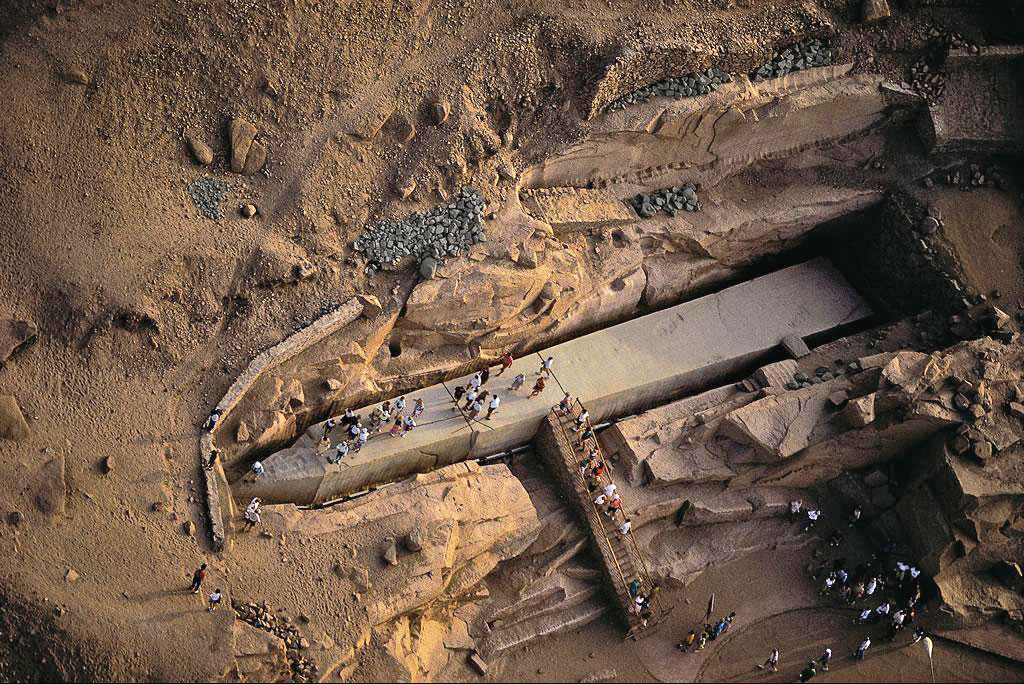
Located in the ancient granite quarry of Aswan, the unfinished obelisk is one of the most intriguing mysteries of ancient Egypt.
The name “unfinished obelisk” comes after the fact that it was never removed from its place because of a major crack on it that made the granite slab useless for its purpose.
You might wonder why would this obelisk be as intriguing as the Sphinx or the Pyramids, but it takes a closer look to realize something odd and unique about it.
As a matter of fact, the surface of this immense granite slab is covered with smooth hollowed-out parts, which almost look like the granite was “scooped out” from the obelisk.
The “scoop” term actually comes from several researchers that studied the structure and couldn’t find a better explanation than this, saying that the rock seems to have been scooped out like a spoon would do with ice cream.
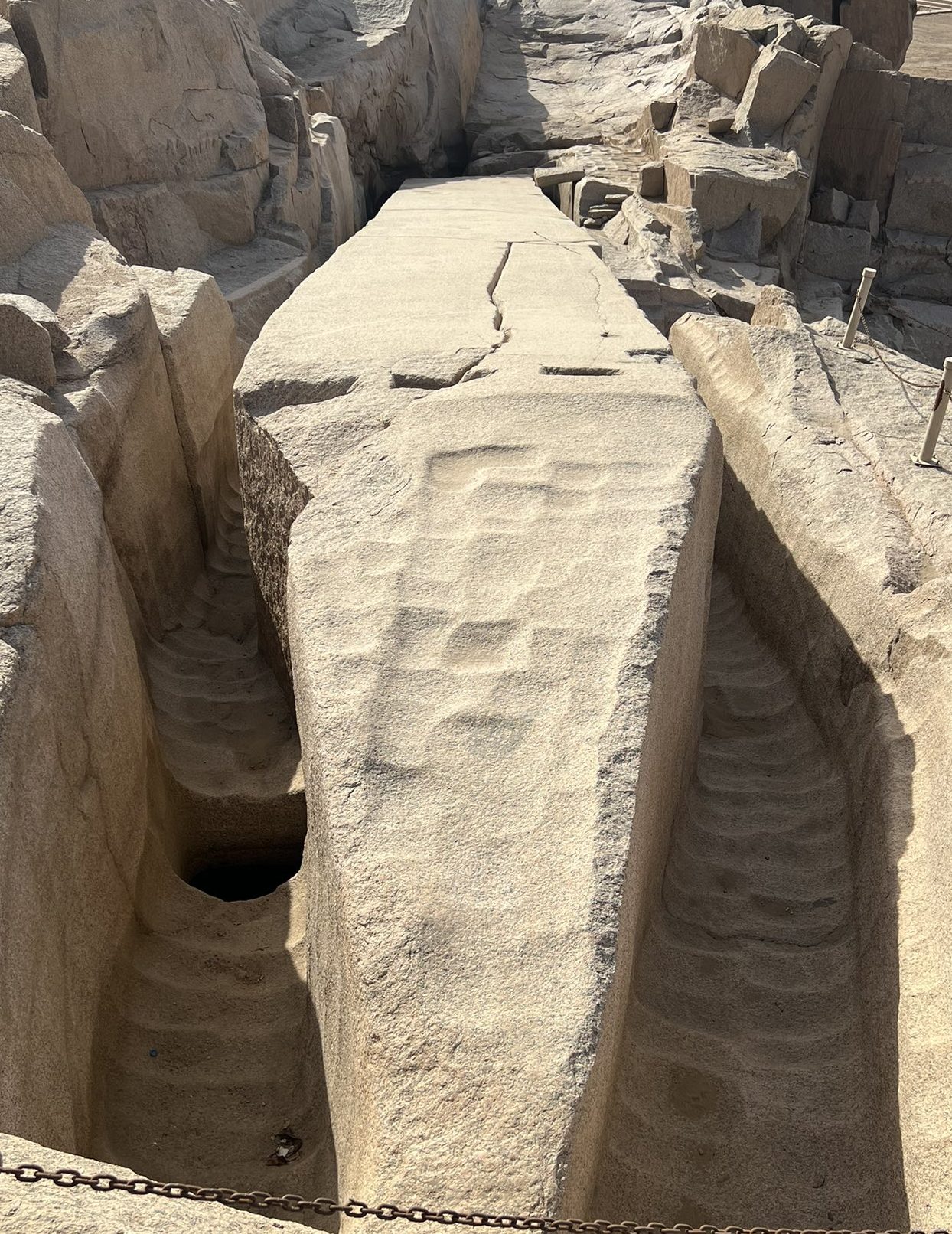
Although this technique is widely present in various megalithic sites of South America, such as Macchu Picchu, Ollantaytambo, and Sacsayhuaman, this is the only place in Egypt where we can admire it.
But this is just the tip of the iceberg of even more enigmatic features.
In fact, the sides of the obelisk are also “scooped out”, but this time vertically and almost evenly, as they go from the sides of the stone to the ground next to it, where they continue in straight lines.
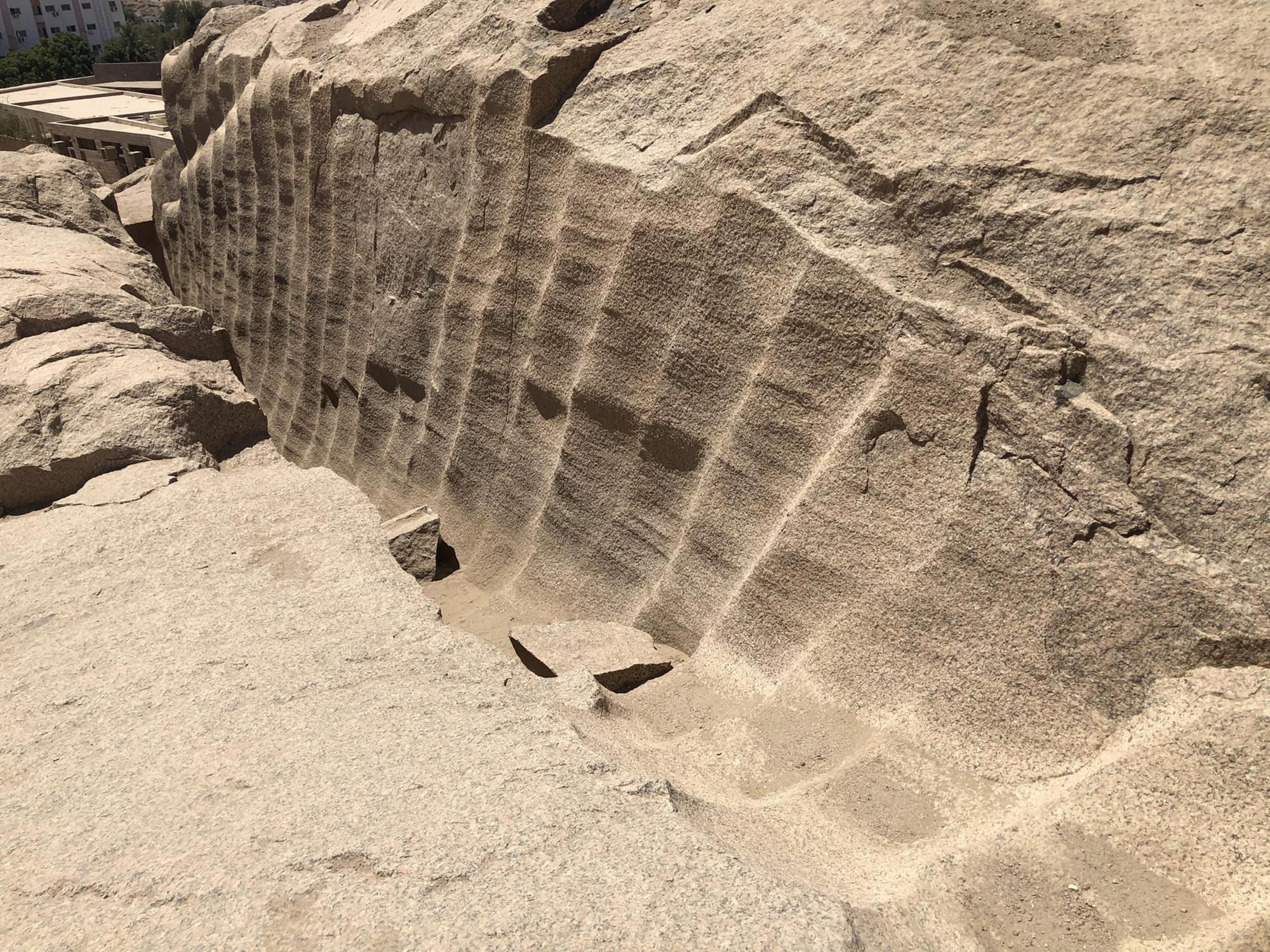
Perhaps the most intriguing feature, however, lies at the base of another stone near the unfinished obelisk.
This stone is in fact almost entirely scooped out at the base, leaving only a tiny piece of granite still attached to its original place.
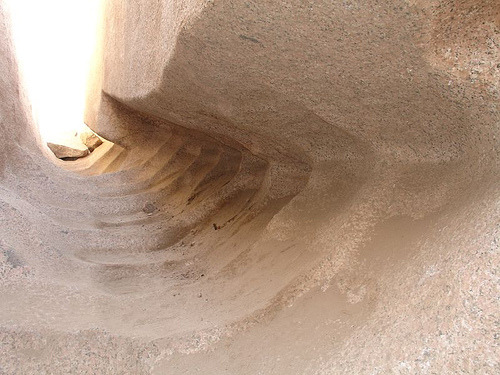
Theories and Interpretations
How does modern archaeology explain these odd-looking features that aren’t present in any other structure in Egypt?
The official theory maintains that the “scoop marks” were made with diorite balls, which ancient Egyptian workers managed to bash on the obelisk until they eventually shaped it.
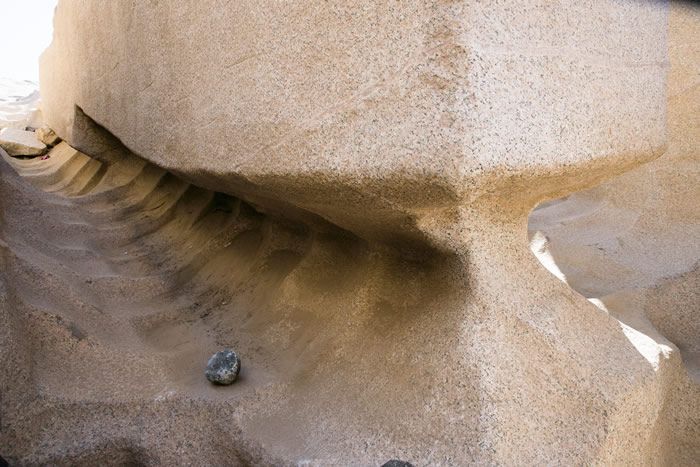
As it’s obvious, this theory leaves many questions unanswered.
It would be reasonable to think that workers may have used this technique to shape the surface of the obelisk, but this method still can’t justify the undercuts of the granite slabs.
As a matter of fact, at a practical level, there is no space around the structure to even allow a person to perform a pounding movement with energy strong enough to achieve actual results.
